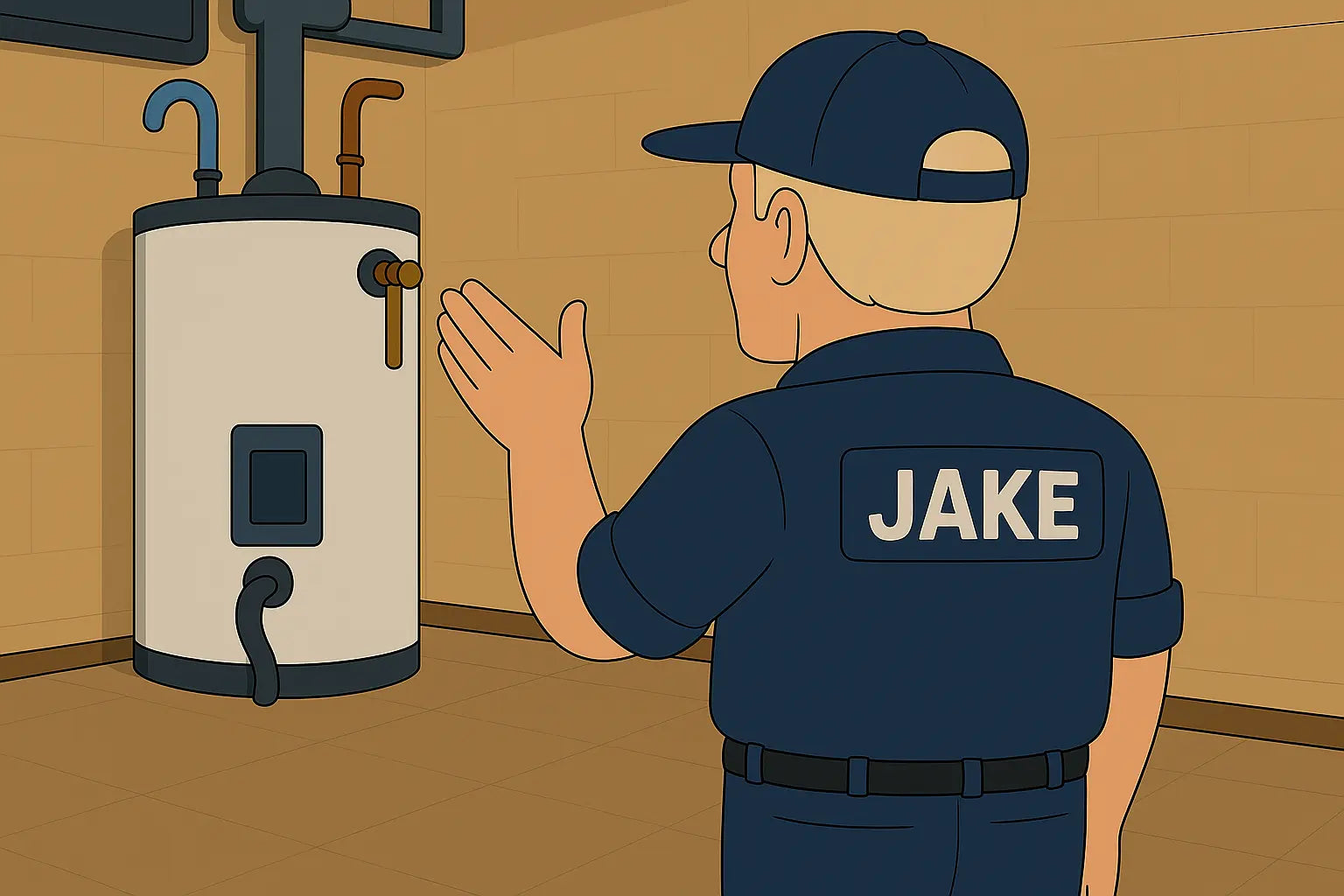Hey There, it's Jake Lawson.
You know that moment when you're standing in the basement, tools in hand, staring at a brand-new water heater like it's about to teach you French? Yeah, I’ve been there. Wiring one of these 50–60 gallon tanks isn't hard once you know what you’re doing—but mess it up, and you’re not just out a water heater. You’re risking a breaker trip… or worse. Let's walk through this together and make sure your new heater is pulling power safely and securely. No singed eyebrows. Promise. 😉
First: Is DIY Wiring Legal in Your Area?
Before we dive into gauges, amps, and junction boxes, check your local electrical codes. Some cities let homeowners do their own wiring with a permit, others require a licensed electrician. Don’t wing it.
Use this resource to check:
👉 National Electrical Code® (NFPA)
Know Your Power Requirements 🔌
Most electric water heaters in the 50–60 gallon range operate at 240 volts and draw around 4500 to 5500 watts, which means you’ll need:
-
A dedicated 30-amp double-pole breaker
-
10-gauge copper wire
-
A proper ground wire
Always refer to the manufacturer’s nameplate for exact specs. You’ll usually find it near the top or side of the unit.
The Tools and Materials You’ll Need 🧰
-
10/2 NM-B wire (that’s 10-gauge, two conductors plus ground)
-
Cable clamps
-
Wire strippers
-
Voltage tester
-
Screwdrivers
-
Electrical tape
-
A solid flashlight (because basements are weirdly dark)
Want a quick refresher on wire gauges and amp loads? This explainer breaks it down well:
🔗 The Spruce: How to Match Wire Size to Circuit Amps
Step-by-Step Wiring Walkthrough
1. Shut Off the Power. For Real.
Find your main electrical panel and switch off the double-pole breaker you’re connecting to. Then use a non-contact voltage tester on the wires to make sure there’s zero juice flowing.
2. Run the Cable.
You’ll run your 10/2 wire from the breaker panel to the water heater location. It must be secured to wall studs or joists at regular intervals (typically every 4.5 feet, per NEC).
Pro tip: If you’re going through metal studs or framing, use rubber grommets or bushings to protect the cable.
3. Install a Disconnect (If Required).
Some areas require a local disconnect box near the water heater. It’s basically a small shut-off switch, which gives you a kill switch right at the appliance.
Check your state code or ask your inspector. NEC Article 422.31(B) usually governs this.
4. Connect the Wire to the Water Heater.
-
Remove the water heater’s junction box cover (usually on top).
-
Feed the cable through a strain relief clamp into the box.
-
Strip the insulation back and connect black to black, white to red or white, and ground to ground screw.
-
Wrap the connections with electrical tape, replace the cover, and secure the cable clamp.
Here’s a helpful video walkthrough if you’re a visual learner:
▶️ Home Repair Tutor: How to Wire an Electric Water Heater
5. At the Breaker Panel…
-
Install your 30-amp double-pole breaker.
-
Connect the black and white (hot) wires to the breaker terminals.
-
Connect the bare copper ground wire to the ground bar.
-
Label the breaker clearly: “Water Heater – 30A”
Common Wiring Mistakes That Could Cost You 💥
-
Using undersized wire – 12-gauge won’t cut it. It can overheat.
-
Mixing aluminum and copper without proper connectors – creates corrosion and heat risk.
-
Skipping the ground wire – never optional, always essential.
-
Reusing an old breaker – upgrade if it’s more than 10–15 years old.
-
Not checking voltage – even if the switch is off, verify with a tester.
These aren't just rookie moves—they’re fire hazards. Need more detail? This piece is worth a read:
🔥 This Old House: Electrical Mistakes to Avoid
How to Know You Did It Right ✅
After you flip the breaker back on:
-
Listen for a soft humming sound (heating elements working).
-
Wait a few hours and check if your hot water is flowing.
-
Use a multimeter to test voltage at the element terminals.
No sparks? No smoke? Congrats—you’re probably golden. 🙌
Still Nervous About DIY Wiring?
Honestly, if your palms are sweating reading this, it might be time to call in a pro. There’s zero shame in having a licensed electrician handle the hookup—especially if your panel’s crowded, outdated, or unfamiliar.
Need help finding one?
Check out this tool:
🔍 Angi: Find a Licensed Electrician Near You
Bonus: Upgrade Your Breaker Panel?
If your house still runs on an old fuse box or your panel is close to capacity, wiring a water heater might be the final straw. Upgrading your panel gives you safer, more modern capacity—not just for the heater, but for EV chargers, heat pumps, and smart tech down the road.
👉 Bob Vila: Signs You Need a New Electrical Panel
Final Thoughts from Jake 🔧
Listen, whether you're a weekend warrior or calling in a pro, safe electrical wiring for your water heater isn’t something you want to mess around with. One wrong move and you’re either blowing a fuse, voiding your warranty, or worse—causing a safety hazard. But get it right, and your 50–60 gallon electric water heater will purr like a kitten for years to come.
And hey—if your old unit's on its last leg or you're ready for an upgrade, I highly recommend checking out this lineup of electric water heaters over at The Furnace Outlet. They’ve got top-quality units in the 50–60 gallon range, perfect for families that need steady, reliable hot water without breaking the bank. Solid brands, straightforward specs, and built with energy efficiency in mind—just how I like it.
Deciding between a tank or tankless water heater? Visit: Is On‑Demand Hot Water Worth Ditching Your 60‑Gallon Tank?
Stay smart, stay safe, and keep those wires tight and tidy. 👨🔧⚡
—Jake, your comfort loving tech







